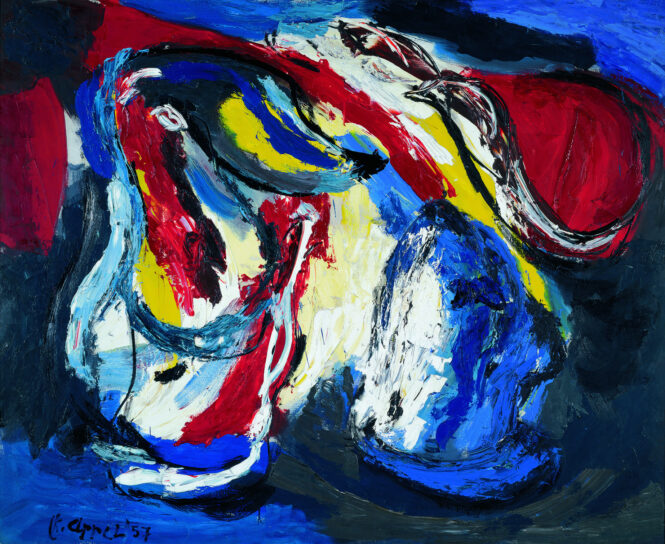Karel Appel, Procession of Two Heads under the Sun, 1957

Oil on canvas, 165 x 203 cm
Collection Lentos Art Museum Linz, Inv. Nr. 1133
Karel Appel’s painting “Prozession zweier Köpfe unter der Sonne [Double Portrait of Heinrich and Otto Benesch]” is remarkable for its use of thick impasto resembling flows of lava, from which a slew of figurative contours emerge. The title of the painting alludes to these figurative elements embedded in an abstract environment. Observers are invited to give free play to the power of their imagination.
Appel’s work method differs fundamentally from those of traditional painters, who start out with a pictorial idea, which they proceed to refine and to transfer to the canvas step by step. In the case of Appel, the act of painting comes first. Meaning and significance are a secondary concern. The Dutch artist applies paint spontaneously – with a brush, a spatula or with his fingers. What he was aiming for was a largely uncontrolled riot of colours or, in Appel’s words, “painting without a preordained plan”. Intuition rules. Like many avant-garde artists, Appel took his bearings from the painting of children and of people with special needs.
Born in 1921, Appel was one of the most important representatives of a movement that is commonly referred to Informel, the French term for ‘informal’, non-geometric abstract art. Artists who belonged to this movement turned away during the post-war era from all established forms. This was their way of reacting against the experience of dictatorship and war. Their rejection of form was a protest against any kind of external coercion.